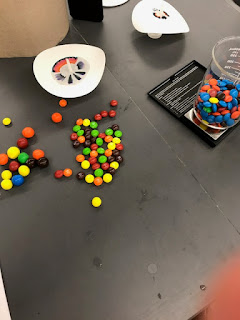Lab 16: Specific Heat of a Metal

Specific Heat of a Metal Introduction: The purpose of this lab was the determine the identity of a metal by calculating its specific heat. This could be done by taking the mass and temperature of the different materials. We specifically used water to heat up the metal and used some known information about it to help determine different measurements about the metal like its energy lost and change in temperature. When we completed this lab, we first, heated up the metal in water keeping track of the masses and temperature. Then, we transferred the metal into cooler water to allow the metal to cool and compared the new temperatures to calculate the specific heat. Data: These were the measurements for our metal in the experiment: Calculations: To find the specific heat of the unknown metal we had to complete a two part calculation which included first finding the energy gained water which was also the energy lost from the metal. This was done by multiplying t...













